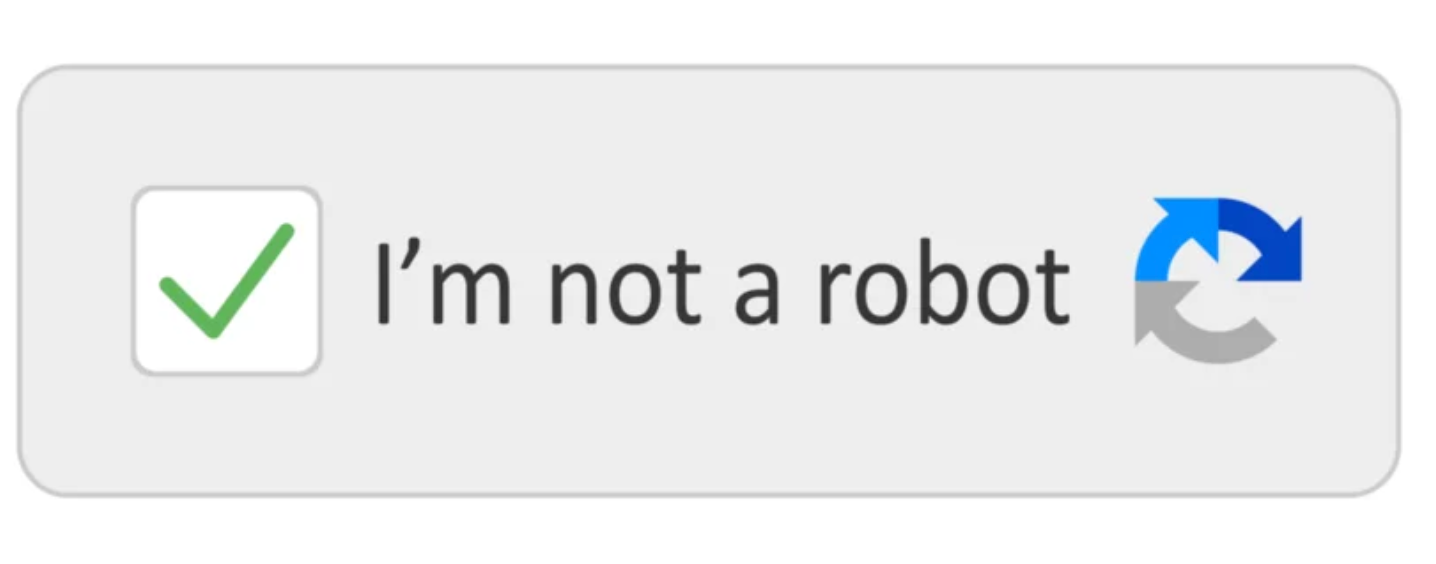The Role of CAPTCHA in E-Commerce Security: Protecting Transactions from Bots
As more consumers flock to online stores, especially during the bustling holiday season, the threat of data breaches and revenue loss due to malicious bots looms large.

In eCommerce, retailers are now facing a growing challenge: the surge in bot traffic. As more consumers flock to online stores, especially during the bustling holiday season, the threat of data breaches and revenue loss due to malicious bots looms large.
Recent findings, such as the 2021 Bad Bot Report, reveal that bad bots constitute a staggering 25% of all internet traffic. These bots engage in activities ranging from price scraping and content theft to account hacking and credit card fraud. Although eradicating all bot activity is a tall order, platforms can mitigate these threats with advanced technologies like machine learning and artificial intelligence.
As a consumer, you might have encountered a security feature asking you to identify images, solve puzzles, or type distorted words before proceeding. This is CAPTCHA—a crucial tool in the fight against unauthorised bots on e-commerce platforms.
By ensuring that only genuine users can navigate transactions, CAPTCHA plays an essential role in preventing fake orders and fraud, thus preserving the system's integrity.
In this article, we'll delve into the definition and practical applications of CAPTCHA and explore how its verification process safeguards e-commerce transactions.
Understanding CAPTCHA: Origin, Definition, and Types
CAPTCHA, short for "Completely Automated Public Turing Test to Tell Computers and Humans Apart," is a tool used by websites to separate real users from automated bots.
As for its origin?
The idea is simple: it presents tasks that are easy for humans but hard for machines, like picking out objects in images, reading distorted text, or solving simple puzzles. These difficulties ensure that actual people use online services by keeping websites safe from spam, data scraping, and other harmful activities.
At first, CAPTCHAs were seen as an effective way to verify human interaction. But Luis von Ahn saw more potential. Rather than just having users decipher random warped text, he proposed using difficult-to-read text from old books. This clever idea not only strengthened the CAPTCHA system by having humans do what computers couldn't—read these tricky words—but also helped with digitising vast amounts of historical content.
While traditional CAPTCHAs typically relied on our superior visual perception compared to bots, von Ahn's innovation transformed a simple security measure into a way to preserve history while still keeping the internet secure.
Types of CAPTCHAs
CAPTCHAs generally fall into three main categories:
- Text-based CAPTCHAs: These involve recognising and typing distorted text.
- Image CAPTCHAs: Users must select images that meet certain criteria.
- Audio CAPTCHAs: These provide an alternative for visually impaired users by requiring the recognition of audio patterns.

The Threat of Bots in E-Commerce
The presence of bots poses a significant threat, primarily through attacks like brute force credential stuffing and credential cracking.
These malicious bots aim to gain unauthorised access to customer accounts by testing stolen credentials against login pages on e-commerce platforms. Bad bots create unique challenges for e-commerce businesses, which face targeted tactics such as price scraping, sneaker bots, grinch bots, and gift card stuffing.
A recent industry-specific analysis involving 16.4 billion requests across 231 international domains highlights striking statistics: 30.8% of e-commerce site traffic comes from bots, with 17.7% attributed to bad bots, and 23.5% of these being particularly sophisticated.
A report by Akamai Technologies emphasises the risks posed by web scraping bots, which account for a substantial 42% of total web traffic. These bots harvest valuable data, including product images and pricing, for competitive intelligence, inventory hoarding, and even creating counterfeit sites, thus threatening business integrity and customer trust.
The pervasive use of bots not only affects operational efficiency and site performance but also amplifies the risk of fraudulent activities, constituting up to 50% of fraud losses in the sector.
CAPTCHA's Role in Mitigating Bot Threats
CAPTCHA systems play a key role in securing e-commerce platforms by making sure real users are interacting with the site, not bots.
These systems challenge visitors with tasks that are easy for humans but difficult for automated software, helping online retailers protect customer data and prevent unauthorised access. As bots become more advanced, mimicking human behaviour, the risks increase. This makes it more important than ever for e-commerce sites to use detection systems powered by AI and machine learning to filter out bot traffic.
Managing bot threats effectively requires a combination of tactics, such as using JavaScript-based challenges, CAPTCHAs, allowlists, and limiting site functions to ensure smooth performance. Advanced monitoring tools and audit logs can also help block harmful bot activity—much like LinkedIn does with data scraping attempts.
By leveraging AI and machine learning, retailers can stay ahead of evolving bot threats, safeguarding their sites without compromising operations or profits.

Advantages of Using CAPTCHA in E-Commerce
CAPTCHA serves as a strong first line of defence against online threats. Integrating CAPTCHA into websites helps reduce suspicious activity and prevent fake registrations and interactions. By verifying that users are real, it blocks spambots that can disrupt business operations and cause significant harm, ensuring only genuine users can register or engage with a site.
For eCommerce platforms, CAPTCHA adds an extra layer of security during online shopping, protecting customers from fraud and keeping payment details safe. A secure and successful eCommerce site needs more than just a good theme and payment system—it requires CAPTCHA to enhance both security and conversion rates. Tools like AuthKong CAPTCHA, for example, seamlessly integrate with popular themes, improving both security and user experience.
Lastly, CAPTCHA helps protect email accounts by blocking unauthorised access attempts. It minimises the risk of hacking, ensuring that login efforts are made by actual users. By employing CAPTCHA, businesses not only secure their operations but also build customer trust by protecting user data and ensuring a safe online experience.
Recent CAPTCHA Developments and Future Directions with AuthKong
Innovations like reCAPTCHA and invisible CAPTCHA have made CAPTCHA technology far more user-friendly and effective. ReCAPTCHA has evolved to reduce the hassle for users—first by introducing the “I’m not a robot” checkbox, and now with invisible CAPTCHA, which operates quietly in the background without requiring any interaction from most users. The latest version, reCAPTCHA v3, uses advanced risk analysis to identify bots, allowing for a seamless, non-intrusive experience.
Invisible CAPTCHA takes this even further, providing a smooth experience while keeping online platforms secure, making it a go-to solution for many businesses. AI-powered CAPTCHA also adapts to increasingly sophisticated bot attacks by using machine learning algorithms, ensuring security stays one step ahead. Biometric CAPTCHA, which leverages unique biological markers like fingerprints or facial recognition, adds another layer of protection. And gamified CAPTCHA turns verification into a fun and engaging task, enhancing both security and user interaction.
Leading the charge in CAPTCHA innovation is AuthKong, offering solutions that address the growing challenges of automated online threats. Known for its reliability and ease of integration, AuthKong combines advanced CAPTCHA recognition with machine learning and image analysis to effectively combat bot activity. Its customisable, easy-to-integrate tools ensure strong security while maintaining a smooth user experience.
Takeaways
The rise of online shopping has created new opportunities for both consumers and businesses. However, this growth has also brought a significant challenge: bot traffic. Bots now make up 25% of all internet traffic, engaging in harmful activities like data theft and fraud that can undermine eCommerce platforms. In response to these threats, AuthKong has positioned itself as a leader in tech innovation, offering powerful solutions to combat the rise of bots.
By using advanced technologies like AI-powered CAPTCHA and biometric verification, AuthKong ensures that only real users can participate in online transactions, keeping both businesses and consumers safe. For retailers seeking to secure their digital platforms, partnering with AuthKong means stronger security and a smooth user experience, making them a trusted ally in the battle against bot-driven disruptions.



